Teaching Tanakh to Weaker Students

Leah Herzog worked in US high schools for over 30 years before making aliyah in 2019. She is a Senior Educator for The Lookstein Center and teaches adult ed. Leah also works as an instructional coach and a museum educator, and is a certified tour guide at the Bible Lands Museum in Jerusalem.
In my roles as a Tanakh teacher and an instructional coach, my goal is to inspire Tanakh students to become engaged, proud, and even passionate Jews, fluent in Jewish literacy and deeply committed to the future of Jewish education and community. This goal is daunting under the best of circumstances; when teaching Tanakh to weaker students, it becomes more so. In this article, I will outline some of the most ubiquitous challenges that arise from teaching Tanakh to weaker students and offer suggestions for navigating them based on my own experience as well as conversations with other educators and research from the field. I believe that navigating these challenges requires both modifications in practice and shifts in mindset, and I will outline each of them.
Tanakh as a subject is somewhat unique in that it combines language, literary skills, and theology. When our Tanakh students have challenges in any of these areas—whether academic, cognitive, behavioral, background deficits, emotional, or spiritual—learning difficulty increases significantly.
The students
I like to group the kinds of challenges displayed by weaker students into three broad areas: academic, behavioral, and emotional/spiritual. And while I separate them into three areas, I recognize that these areas often impact each other, compounding the difficulties faced by the students.
Academic challenges can range from visual and auditory processing issues to the variety of cognitive deficits loosely grouped as “learning disabilities.” If a student struggles with reading for whatever reason, can’t hear or properly process what their teacher and classmates are saying, and also struggles to remember, comprehend, and think critically about information, then learning Tanakh becomes immeasurably more difficult. This is further compounded by the added challenge of Tanakh being written in Hebrew, with completely different characters, vocabulary, grammar, and orientation (right-to-left), and in a language that is not the same as “modern” Hebrew.
Behavioral challenges are usually a function of either attention deficits or emotional issues. As a former colleague reflected, there is a clear difference between students who have learning issues and those who are “bouncing off the walls,” but these two groups are often in the same classroom, especially in schools whose classes are tracked. Trying to address the needs of both groups simultaneously shortchanges both. These students’ challenges also impact homework, review, and studying, further complicating their ability to learn, process, and internalize.
The umbrella of emotional and spiritual challenges is large. Spiritual challenges range from disinterest and disengagement (“I don’t care” and “This isn’t important”) to anger, feeling marginalized, or outright rejection (“I don’t believe in any of it” or “this stuff is just immoral and wrong.”) For students in Orthodox schools and/or coming from Orthodox families and communities, this spiritual dissonance can add another stressor and impacts directly on Tanakh study. Any academic challenges may further compound their emotional and spiritual struggles. As one colleague described it, weaker Jewish studies students often feel that they are “failures” at being Jewish, which feeds into the cycle of being distanced from learning.
Perhaps the most common emotional challenge is anxiety. Tanakh as a subject is text-based in a foreign language, requiring commitment and focus, and tied up with theology and identity; it thus intersects with anxiety points in multiple places. Students who struggle to succeed academically also have to deal with the anxiety that accompanies the pressure to overcome their challenges and “be normal.” For those students who are desperately trying not only to keep up but to fit in with their more successful peers, anxiety levels can’t be understated.
The teachers
The challenges facing Tanakh teachers stem from two main areas: inadequate training, including the lack of pedagogical toolkits and institutional support, and mindset. Many Tanakh teachers did not go to “teacher school”; we come to the Tanakh classroom because we love Tanakh and love sharing it with others, but we often lack the pedagogical foundations we need to be successful. The challenge becomes magnified when teaching students who ‘students who struggle to learn or don’t want to connect for whatever reason. Targeted professional development can be helpful, but one-day, or even multi-day workshops are limited in their ability to equip teachers to deal with the difficulties, and many schools lack the luxury of a full-time learning specialist who can support teachers, not to mention the special support needed for teaching Jewish studies. Ongoing instructional coaching can be very valuable but is often very expensive.
Our mindset as Tanakh teachers presents challenges that are harder to unpack. The same sense of mission and passion that led us into teaching Tanakh can also trip us up: our students don’t necessarily love Tanakh the way we do, and it can be hard for us to really understand or empathize with students who either can’t or don’t want to learn. When we incorrectly perceive students as “lazy,” “unmotivated,” “impulsive,” or “incapable,” we fall prey to minimizing their challenges and the accompanying anxieties. Or we coddle the students without generating meaningful expectations instead of trying to find approaches to help the students overcome their obstacles. Instead of teaching and inspiring, we end up frustrated, exhausted, bewildered, and disheartened—none of which is helpful to our students.
Navigating the Challenges
Navigating the challenges in teaching Tanakh to weaker students involves adjusting both our practice and our mindset. Perhaps first and foremost, we need to get help. I benefited from a few memorable and transformational PDs that were eye-opening in terms of understanding students’ learning issues and provided me with implementable tools. School-based learning specialists are an invaluable resource, as are colleagues with experience in dealing with a range of students or who have been trained to do so. There is no need to wait for a formal invitation from a senior colleague and/or a supervisor—seek them out. Furthermore, colleagues are often more than happy to help. Once you get the suggestions, you need to make time to sit with them and try to implement the tools and strategies that are suggested. Review what you did, what was helpful, and what was not. Try to understand why it worked or didn’t, and tweak and try again. As you repeat and tweak there will be more successes alongside the ongoing frustration—and you, the teacher, will also gain insight and empathy for the students through this process as you experience the frustration of “getting it right” that is so much a part of your students’ experiences.
What follows are some “highlights”—tips and tools that I, my colleagues, and my mentees have found particularly useful.
1. One of the best pieces of advice I received from a learning specialist was to take whatever works with stronger students and break it down into smaller, more manageable, and more accessible pieces while maintaining the same high expectations you would in an honors class. Students want to succeed and can rise to, even surpass, our expectations if we scaffold and chunk effectively. It allows for easier processing and more chance of success. Consider smaller chunks as bricks that are then laid one atop another with the “mortar” of review and connections; the structure emerges more slowly but is just as large and strong.
2. Universal Design for Learning (UDL) is founded on the premise that whatever creates easier access (think of a ramp) supports more learning with less anxiety. As a visually impaired person, I am keenly aware of the way easier access supports learning and allows me to push my comfort zone to achieve more. Here are some examples of how to make learning Tanakh more accessible.
- Vocabulary lists, graphic organizers, or charts that students have to fill in as they listen and learn.
- Larger fonts or more space between lines help students focus more easily on one thing at a time.
- To facilitate deeper processing, provide written advanced organizers and/or tell the students what they need to tune into that day. This creates a scaffold on which students can build.
- Exit tickets create the in-class framework for students to review what they’ve learned and identify what they’re still unclear about, as well as giving teachers data they can use.
- For behavioral or attentional issues, providing students the freedom to move or stand up, even if only in the back or side of the room where they can move without distracting other students, or letting them sit on the floor so they feel more “grounded.”
- Providing students more “think-time” or even putting timers on the board to help them with time management.
3. When working with weaker students in Tanakh, backward planning demands particular clarity regarding goals in terms of skills, content, and values. Backward planning works like Waze or trip planning. The teacher first needs to identify where the students need to get to at the end, and afterward can plan the “best” route that ensures they get there smoothly, safely, and perhaps even eagerly. We also need to know whether our students have “arrived” and decide how they can communicate this.
If the goal is content-driven, as in understanding an idea or a passage of text, then perhaps Hebrew should take a backseat, except for really critical words and grammar points. Student access to a good translation can support both content acquisition and identifying/learning the keywords and grammar issues. If the goal is skill-building, which is possibly boring as well as challenging, then teachers can make this process more fun and engaging without compromising the challenges. Gamifying skill-building—having students create Kahoots, Quizlets, or Minecraft games—can generate what researchers call “hard fun,” and encourage necessary practice as well as processing. Using student-centered learning so that students are supporting one another is also effective. For example, hevruta pairs can take turns with one reading and translating and the other listening and correcting. Groups identify problems in the text and suggest solutions and then debate, discuss, defend, and evaluate possible answers.
Weaker students also need very clear expectations, incentives, and consequences. Assessments—both formative and summative—need to show teachers and students themselves that they’ve “arrived” (or not). These assessments can be differentiated, creative, and still rigorous, but weaker students in particular need to know what will be expected of them and have the opportunity and guidance to practice.
4. Another way to support weaker students is to consciously and transparently separate Tanakh as a subject, especially the skills, from the values, lessons, and spirituality it contains. By supporting spirituality in and of itself, completely separate from a given text, students can feel connected to their Jewish legacy, to their religious practice, and to God. They are less likely to view themselves as “failures” just because they are not “good at” Tanakh, and the more holistic, inner-driven experience can motivate them to push through the slog and/or stress of text-based learning. One of my weakest students was also one my most wholeheartedly, unabashedly, and joyfully committed to her Judaism; her enthusiasm inspired both her peers and me, and got us through some tough days.
5. The mind-shift required in teaching Tanakh to weaker students is both the easiest and the hardest. The easy part is that it’s an internal, self-guided process. You can do it incrementally and at your own pace; these small shifts will build on each other over time. The mind-shift can be a “takeaway” after a PD, a conversation with a colleague, or an “aha” moment while teaching. It is being open to these moments that can actually be more difficult because, as mentioned above, we sometimes make incorrect assumptions about weaker students. In fact, the hard part of a mind-shift is truly recognizing, understanding, and relating to how weaker students are different from us in the way they learn and (possibly) relate to Tanakh. We know that this type of empathy is a core Torah value; framing it as such can help us when we don’t have the time, energy, or inclination to put ourselves in our students’ shoes. I sometimes ask my mentees to think about something that is hard for them and/or that they’re not good at, and then imagine what it would mean for them to be expected to do that every day and be graded and judged by their performance. I also ask them what helps them and also motivates them to work through challenges. These conversations and reflections can be very productive and impact practice.
6. Another element of the mind-shift is recognizing portals. Passions create ready portals, and in teaching Tanakh to weaker students, using passion-based portals has proven incredibly helpful. Portals create points of entry for relevance and being able to use strengths to buttress weaknesses, as well as relationships. Teachers can use portals for differentiated assessments, metaphors and hooks for both skills and content in Tanakh, and points of departure for values conversations. We may have to venture beyond our comfort zones, but using these portals allows for connection points and all the benefits—academic, emotional, and spiritual—that flow from them.
Conclusion
Teaching Tanakh to weaker students is hard, and is often frustrating and mentally exhausting, but modifying practice and shifting mindsets are pivotal to greater success. A colleague once pointed out the difference between thinking about teaching Tanakh as what I (the teacher) will do vs. what the student will be able to do at the end of a lesson/unit/month/year/high school. If our students walk out of Tanakh class feeling confident that they have the tools to learn Tanakh in some way and the desire to do so, that they are inspired by Tanakh, and have deepened their connection to our legacy, our religion, and to God, then it’s been well worth the struggle. With a combination of strategies, support, and mind-shifts, we as Tanakh teachers can build a smoother road for our students to travel on, and leave them with the energy, excitement, and inspiration to continue their learning journeys.

Leah Herzog worked in US high schools for over 30 years before making aliyah in 2019. She is a Senior Educator for The Lookstein Center and teaches adult ed. Leah also works as an instructional coach and a museum educator, and is a certified tour guide at the Bible Lands Museum in Jerusalem.

From The Editor: Winter 2025
It is one of the oldest literary collections ever written and still very much in circulation. Public readings (and celebrations) of its text are practiced in nearly every synagogue in the world in a regular, fixed cycle. It has been analyzed and studied by religious luminaries, academic scholars, and lay people, and has been studied and taught more times than we can count, with hundreds if not thousands of published commentaries. It plays a central role in all of our lives. One would think that by now we would have a pretty clear idea of what content from Tanakh should be taught and how it should be approached pedagogically at various age levels. And yet, a mountain of anecdotal evidence reveals that there is a huge range in what is taught, why it is taught, and how it is taught.

Tanakh Hats for Meaning Making: A Multi-Perspective Approach to Biblical Text Study
In our ongoing quest to enhance Tanakh education, we’ve developed a fresh approach that energizes both teachers and students while promoting diverse interpretations, critical thinking, and collaborative learning. Inspired by Edward de Bono’s Six Thinking Hats, this method encourages learners to view Tanakh texts from multiple perspectives, offering deeper understanding and fostering connections between foundational Jewish texts and modern life. The Tanakh Meaning Making Hats (TMM Hats) approach equips students with various interpretive tools to explore familiar perspectives and discover new ones, building understanding through both familiar and novel frameworks. This method, grounded in constructivist learning theory, enables students to construct knowledge actively, allowing them to examine texts from varied angles.

From Consumption to Production: Equipping Students to Create Torah
In the realm of Tanakh education, there is a tendency to focus on the consumption of Torah knowledge, where students engage in the study, understanding, and analysis of sacred texts. While amassing a critical base of knowledge is undeniably essential, I believe that shifting from students-as-consumers to students-as-producers—in which students not only absorb the teachings but also create and contribute their own interpretations and insights that can be shared publicly—is equally essential. How can we teach students to produce a deep analysis of Torah and not just consume others’ commentary? How do we encourage students to think for themselves while teaching other valuable lessons in the process?

Innovating Teaching Tanakh
What I observed one day in my visit to an English Language Arts (ELA) classroom last year opened my mind to completely new ways of teaching Tanakh, leading to greater student engagement.I work at a pluralistic elementary school that emphasizes growth mindset and continued development for each educator. One specific policy that helps educators learn from each other is the requirement to visit at least two other classrooms every semester. This routine fosters a genuine culture of professional growth, where teachers share ideas, observe varied teaching methods, and offer constructive feedback. I’ve always found these observations beneficial, but one visit left a lasting impact on my approach to teaching Tanakh. Stepping into Mrs. Michelle Petrova’s 6th grade ELA classroom, I was greeted with an incredibly vibrant atmosphere.

Teaching the Halakhic Sections of the Torah
Much of the discussions we find about teaching Humash focus on the narrative portions—Genesis, the story of the Exodus, the wanderings in the wilderness. To a large extent that makes sense, as they provide students with their origin stories—so critical for building the foundations of identity—and are inherently interesting, as stories tend to be. That being said, there is another half of the Torah, whose nature is primarily legal. While some skip it intentionally or somehow “don’t get around to it,” for others it is no less important to teach, even though the content often doesn’t lend itself easily to grab and hold the students’ attention. As with any teaching, we must first identify what we want to achieve before we can think about how we want to do it.
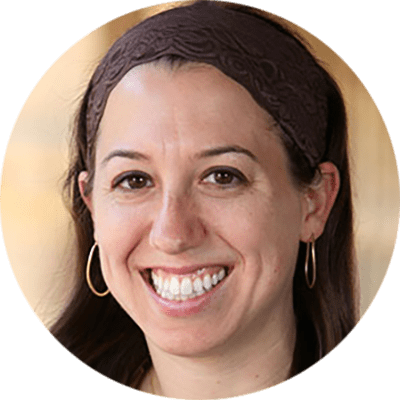
Teaching Tanakh: A New Perspective on Pedagogy
As many teachers of Tanakh know, the Tanakh classroom serves as a crucible for interpreting sacred texts, particularly in theologically and denominationally diverse day schools, camps, and beit midrash settings. The question I wish to explore here is: how do Jewish educators navigate the complex landscape of multiple orientations towards Tanakh that they might find in the seats of their classroom and make sure to empower all their students as interpreters? Central to my own Tanakh teaching, at almost every grade level, in almost every type of day school context, is the realization that my students don’t read Tanakh according to the same orientations or literacy practices, but it would be helpful if they did—at least for the duration of my class.
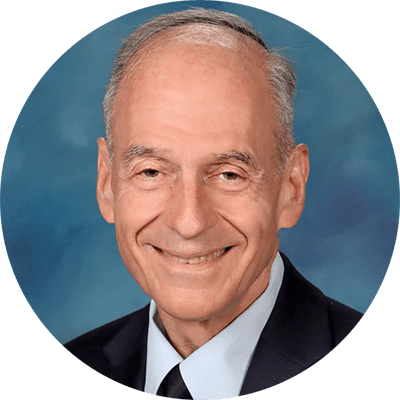
Tanakh Study and Reader Response
“My students insist on translating every pasuk (verse) into English and then using their translation to answer the questions. How can I get them to work from the makor (original text)?”“When I give in to their learned helplessness and teach them an interpretation, they can’t identify the problem in the pasuk that the interpretation comes to solve, and then they get stuck on the one understanding I presented and won’t consider an alternative. How can I help them think for themselves?” “I want my students to identify with the avot (patriarchs) and imahot (matriarchs) and learn from their example. But they somehow can’t relate to them as role models. What am I doing wrong?”Sound familiar? For years these complaints were a constant refrain from my Tanakh-teaching colleagues.
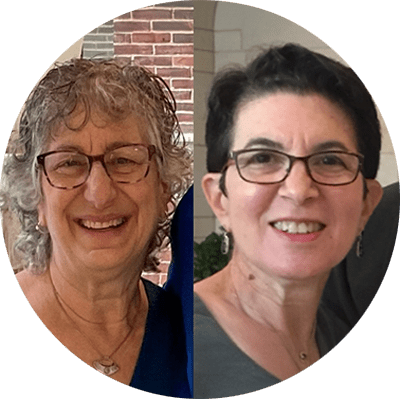
Vision, Lenses, and Focus: Bringing Clarity to Tanakh Curriculum with Standards
Any Tanakh text, whether narrative or legal, contains an abundance of ideas, elements, and complexities, and has the potential to raise countless questions. How does a school community decide which of them to pursue?Nechama Leibowitz, quoted by Shmuel Peerless in To Study and to Teach: The Methodology of Nechama Leibowitz, wrote that educators have……to decide what to leave out and what topics should not be touched, because it is pointless to tackle a number of different topics and problems superficially or incidentally in a chapter. It is preferable to concentrate on just a few topics, but in depth (p. 15). Standards serve as powerful tools for deliberating about a vision for Tanakh education and for shaping Tanakh curriculum once the school’s vision is clear.
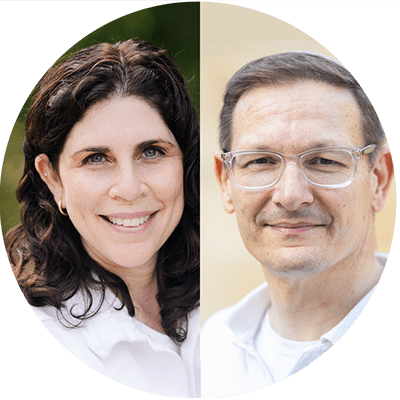
Student-Centered Learning in the Tanakh Classroom
For the past decade, educators have been using the term student-centered learning (SCL) but still finding it tricky and challenging to apply to the Tanakh classroom for a variety of reasons. One is the amount of time teachers must dedicate not only to teaching content but also to developing textual reading skills. Another is that teachers might feel reluctant to engage in a pedagogy they feel allows for too much free thinking and not enough respect for the mesorah, classical commentators, and tradition in general. Here we offer tips and strategies for how to introduce SCL into the Tanakh classroom in large and small ways. Differentiation and Social-Emotional Learning Are you differentiating in your classroom? Great! That’s one time-tested way to employ SCL in the Tanakh classroom.

Outside the Box: A Values-Based Approach to Parashat Hashavua
Tanakh in dialogueWhat position does the Tanakh occupy in the life of an early teen? For many, the Tanakh resides in the mental box into which school is commonly placed—a box of academic pursuits, Hebrew language and grammar, Jewish history and Biblical knowledge. There is nothing innately wrong with this, to the contrary, Tanakh study certainly can and does involve these important elements. But a missed opportunity arises when compartmentalisation precludes Tanakh from forming dialogue with the other “boxes” that rise to prominence in the early teen years.Early teenagehood is often marked by questioning and exploration as students begin a journey of seeking to understand that which may have previously gone unquestioned.

Building Tanakh Skills One Step at a Time With Manipulative Materials
“Give a man a fish,” the saying goes, “and you feed him for a day. Teach a man to fish and you feed him for a lifetime.” At Netivot, we have developed a Tanakh program that gives each child the personalized gift of feeding himself for a lifetime. The Montessori method is predicated upon the idea that each child, if provided developmentally appropriate opportunities, will inherently learn and grow and master at each phase of development according to his own individual needs. For this reason, in our classrooms, the expectation is not for children to memorize translations of text “chorally,” but rather to develop individually the skills to translate for themselves. Using key elements of the Montessori method, our students build a series of skills that allow them to tackle pesukim independently.

Bringing Nechama Leibowitz Into the Classroom
The written legacy of Nechama Leibowitz, in her gilyonot and books, has served and continues to serve as the basis for Torah study for many serious students of parashat hashavua, Tanakh, and parshanut. Her teaching methodology, as experienced by one of the authors of this article in 1988-89, in her weekly classes in her apartment in Jerusalem and in her weekly shiur at the Gruss Kollel, served as a model for how to teach Torah. Certain elements have been adapted, but we have found that her principle of encouraging independent thinking and individualized feedback gives students in middle school a personal connection with the text and empowers them to continue in their Torah study with positivity and self- assurance.
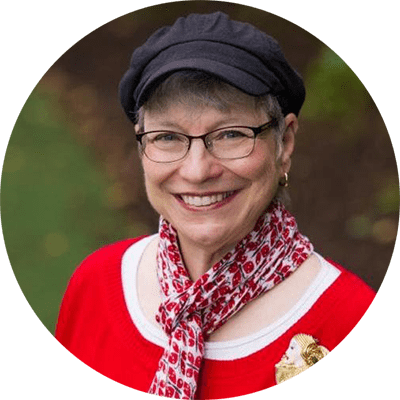
Opening the Middle School Window to Midrash
A number of years ago, when I was teaching the sections in Genesis about Abraham and Sarah to a girls’ middle school class, one of my students raised her hand and said, “I don’t like how much is missing in the Torah.” I asked her what she meant and she replied, thinking like a typical middle schooler, “Like, what did Abraham and Sarah talk about at night when they were just sitting around their tent?” After responding facetiously that Sarah probably asked Abraham what he thought about her new burka, I took the moment to answer the class seriously. This was a wonderful opportunity to deeply introduce my students to midrash as one way to fill in the “blanks” in the Torah text, to delve into the “spaces” in the text, and to teach us moral messages with which to inform our own lives.
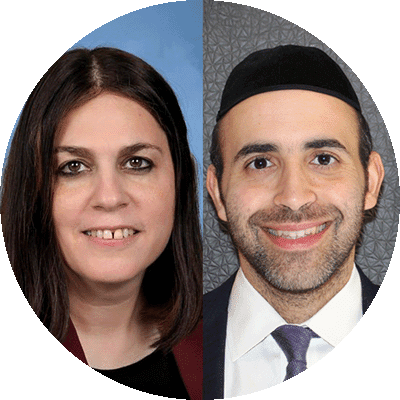
The Barkai Method for Teaching Humash
In the introduction to his book Who Knows Twelve, Rabbi Berel Wein explores a troubling phenomenon: the growing disconnect between the Jewish people and their sacred texts. Whatever the causes for its decline may have been, many Jewish day schools today are attempting to reinvigorate the study of Tanakh, recognizing its fundamental role in Jewish identity and education. Maimonides codified the necessity of studying Tanakh in Hilkhot Talmud Torah (1:7), asserting that it is a crucial component of Jewish life. Today, there is a growing recognition of the need to revive these ancient texts, which hold profound significance for Zionism, community, ethics, spirituality, identity, and much more. One noteworthy example of this revival is the Barkai educational system, developed in Israel by Rav Dan Be’eri more than 40 years ago.
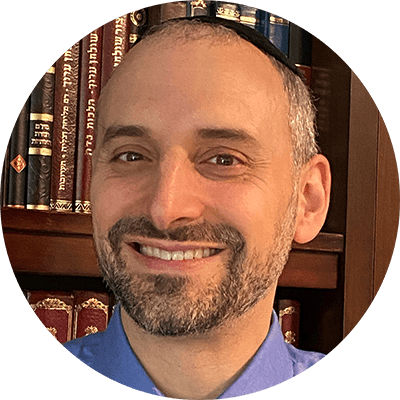
Introducing Sod Into the Tanakh Classroom
In my years of teaching Neviim and Ketuvim, one of my overarching goals was for students to gain an appreciation of why specific commentaries approached the same text differently. I spent significant time on both peshat and derash approaches, highlighting the strengths and weaknesses of each interpretation’s handling of textual issues. One experiment with introducing sod resonated deeply with some of the students and complemented the other work we were doing. I share that experiment here. Sod (literally, secret) is a mode of hermeneutical interpretation that sees the characters and storyline as being symbolic of fundamental themes. Although definitions of sod usually include mysticism, the relation to Kabbalah is only that sod reflects an interpretation that directly addresses giving insight into our relationship with God.

Heroes Within Reach
We read the Bible with the understanding that many of the characters described are our heroes, our Jewish archetypes. We pore over every action, every word, for insight into their thought and character, insight that can inform the same in us. These are not dry annals of the lives of figures from the distant past; these people are as alive today as we are—alive within us, within our synagogues and culture, because we study them so intensively and know them so intimately. Each of us knows the stories so well, that we know what happens between and behind the words.What is a Hero?But what does it mean to consider them heroes? In what sense does, or doesn’t, the Bible portray them as such? And more importantly, how does the Bible express what a hero is, and what makes someone heroic?
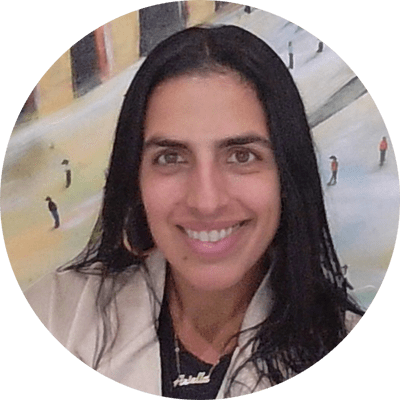
Tanakh as a Tool for Building Identity
Jewish tradition holds Torah teachers in high esteem, viewing them as more than just conveyors of knowledge. They are seen as spiritual and moral guides, shaping the character and identity of their students. In The Lonely Man of Faith, Rabbi Soloveitchik emphasizes that the role of the Torah teacher goes beyond intellectual instruction; they facilitate a divine encounter, guiding students toward a deeper connection with God. The Talmud (Bava Metzia 33a) elevates the honor due to a Torah teacher above even that of one’s parents, as the teacher introduces the student to the “world to come” through their instruction—a profound form of giving life. These texts paint a picture of the Torah teacher as a builder of Jewish identity, imparting values that help shape a student’s character and moral foundation.

Tanakh as Our Story
Tanakh is the story of the Jewish people. This basic component of our identity and our tradition has tremendous spiritual and educational power which, unfortunately, is often untapped. In the following essay, we aim to show how this idea of Tanakh as the grand narrative of the Jewish people can be developed into a powerful educational opportunity. In tapping into Tanakh’s central narrative feature, we are not merely making Tanakh more interesting for our students. Since the times of Moses, the Jewish people has known that a good story does more than just pique an audience’s interest. In the words of Rabbi Sacks, “The Israelites had not yet left Egypt, and yet already Moses was telling them how to tell the story. That is the extraordinary fact. Why so? Why this obsession with storytelling?
Reach 10,000 Jewish educational professionals. Advertise in the upcoming issue of Jewish Educational Leadership.






